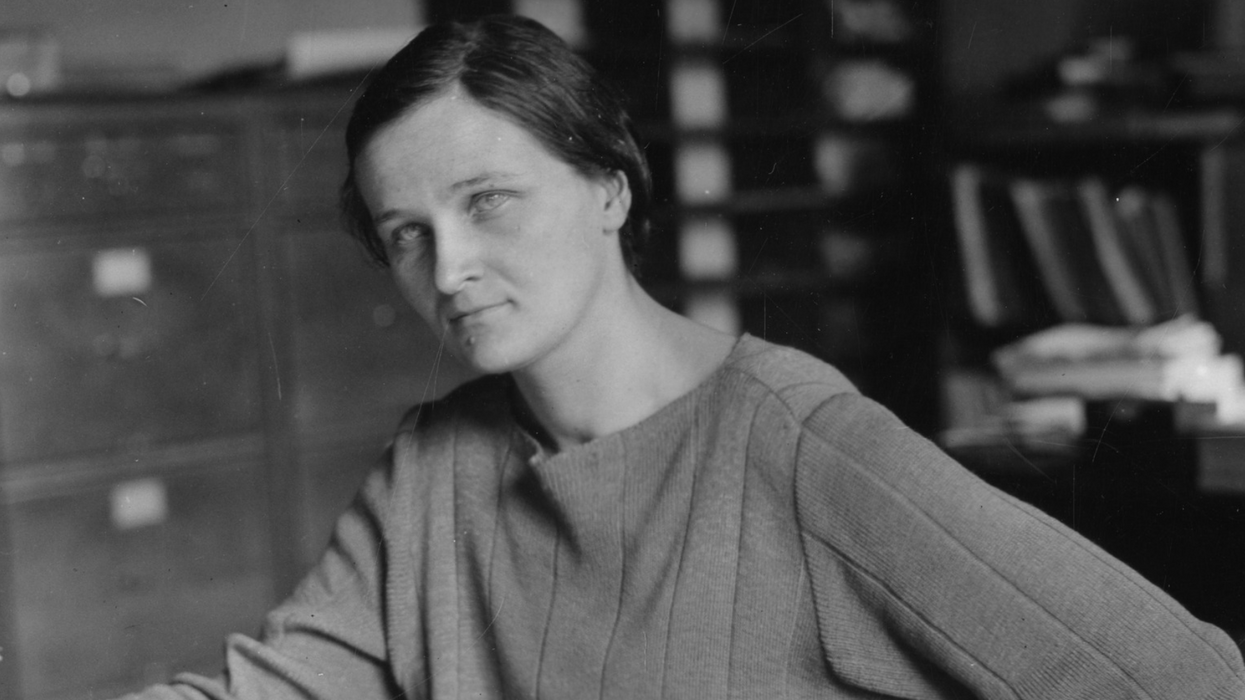
Early astronomers made some of the most impressive discoveries going.
Imagine being able to make accurate deductions about space when you can’t visit it, can’t observe it properly and have no way of verifying your claims?
And yet hundreds of astronomers managed to come up with theories about what makes up our universe that we now know to be 100 per cent true.
Astronomers like Cecilia Payne-Gaposchkin who was responsible for correctly surmising one of the central understandings we have about space: that the sun and the stars are made up mostly of helium.
But her role in putting forward the theory wouldn’t come to light for several years, thanks to a man who told Payne-Gaposchkin that she couldn’t possibly be right in making such a claim.
Who was Cecila Payne-Gaposchkin?
Cecilia Payne-Gaposchkin was a 20th century astronomer. Born in 1900, in England, she knew she wanted to be a scientist from a young age.
That’s how she ended up studying for her first degree at Cambridge University, reading Physics. It was a period she saw as life-changing, later speaking about the experience of attending her first lecture. “My world has been so shaken that I experienced something very like a nervous breakdown,” she said. Which makes a difference to pressing snooze knowing you’ve got a 9am.
But Payne-Gaposchkin soon worked out that the UK didn’t offer much in the way of opportunity for young women wanting to study the stars. Cambridge itself wouldn’t even give out proper degrees to women students when she graduated in 1923 – Cecilia left the university with only a certificate to show for her work.
So instead she headed for America, aided by a graduate fellowship at Harvard College Observatory.
What did Cecilia Payne-Gaposchkin discover?
In 1925, Cecilia Payne-Gaposchkin became the first person to attain a PhD in astronomy from Harvard, an achievement in itself.
But her thesis went one step further; there she put forward the evidence she’d discovered that the sun and other stars were actually composed mostly of hydrogen and helium, the lightest elements, meaning they were the most common elements making up the universe.
Her calculations came via ‘measuring absorption lines of stellar spectra’ and challenged the accepted prevailing belief that the sun had a similar elemental make-up as the earth. Her conclusions were called “undoubtedly the most brilliant Ph.D. thesis ever written in astronomy,” by some peers.
Yet not everyone agreed – and the interjection of a man would prevent Payne-Gaposchkin’s theory becoming accepted knowledge for another four years.
What happened to Cecilia Payne-Gaposchkin?
Many prominent male astronomers shouted down Cecilia’s conclusions about the composition of the stars.
The loudest voice was that of Henry Norris Russell, director of the Princeton University Library, who insisted she had messed up her calculations, calling the results “clearly impossible”.
The peer pressure was such that Payne-Gaposchkin had to insert a note in her thesis, pretending she didn’t believe such calculations could be true.
“The enormous abundance [of hydrogen and helium] derived … is almost certainly not real,” she wrote.
But it was true. And in 1929, Henry Norris Russell admitted he had been wrong – stars were made up primarily of hydrogen and helium. He also credited Payne-Gaposchkin’s work on the subject.
Despite that it was still Russell who then got much of the public credit for making such an important discovery in the first place… even though he was the person who’d suppressed it for four years.
Cecilia was eventually partially recognised for her work during her lifetime; in 1956 she became the first woman to be made a full professor at Harvard.
And three years before her death in 1979, she finally got a sweet taste of ice cold revenge: being awarded the the prestigious Henry Norris Russell Lectureship, by the American Astronomical Society, handed out “on the basis of a lifetime of eminence in astronomical research”.
Reach for the stars, Cecilia.













